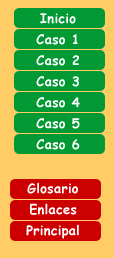Caso 5 - Background Information
A bulb is a promise. These "packaged plants" each have
a complete miniature plant inside along with its food.
The word bulb loosely describes plants that grow from an underground
mass of food storage tissue. True bulbs like tulips and daffodils
contain a complete miniature plant surrounded by fleshy scales,
mostly carbohydrates to nourish the plant, attached to a basal
plate from which roots grow. True bulbs can be either tunicate,
with a papery covering such as onion or tulip, or scaly, with
no paper covering such as lily.
If a bulb is sliced in half horizontally, you will see rings
formed by the scaled leaves. These scale leaves store food for
use by the bulb as it grows. An onion is a good example. If you
slice a bulb vertically, you should be able to distinguish leaves,
stems, and even flower buds. You can use an onion here also or
use some of the paperwhite narcissus bulbs that will be used in
the planting project.
Planting Paperwhites
Paperwhite narcissus are the easiest bulbs to force for indoor
growing projects because they need no special conditions to grow
and bloom. They are best planted in a container with no drainage
holes. The container can be filled one-third of the way with either
pebbles or potting soil. The bulb is then placed in the pot and
covered with pebbles or soil. Keep the soil moist or if using
pebbles, keep the water level to just below the surface of the
pebbles. Place the container in a cool, dark, location for about
a week. Move the pot to a well-lighted, cool spot, keep watered,
and within 3-5 weeks you should have flowers.
A more challenging project would be to force spring bulbs such
as tulips, daffodils, or crocus to bloom indoors. Spring bulbs
are typically planted outdoors in the fall where they spend the
cold winter not resting, but growing roots. By simulating the
natural conditions outdoors, you an coax these bulbs to bloom
indoors. Ideally the potted bulbs should be kept at temperatures
between 35-45 degrees and in the dark.
A cool cellar, unheated garage, refrigerator, or buried outdoors
under leaves works well. Check every so often to be sure the soil
doesn't dry out. Leave bulbs in these conditions for about 10-12
weeks. By this time the pot should be full of roots and shoots
will have emerged. Bring the potted bulbs into a cool, dark area
and note the white shoots change color from white to green as
it starts to photosynthesize. Move the pot to a bright location
and chart the growth of leaves and flower stems. You should have
blooms in 2-3 weeks.
|



